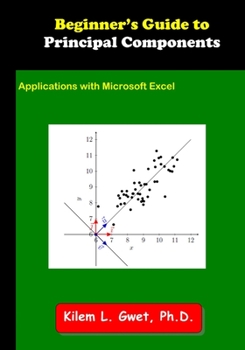Beginner's Guide to Principal Components: Applications with Microsoft Excel
Are you facing the challenge of analyzing complex datasets filled with correlated variables? Beginner's Guide to Principal Components introduces you to Principal Component Analysis (PCA), a powerful statistical method that simplifies data analysis by reducing dimensionality and revealing underlying patterns. By transforming your data into uncorrelated principal components, PCA allows you to replace dozens of variables with just a few key carefully constructed composite indicators, making your analysis clearer and more effective.
This book is designed for those new to PCA, offering a practical, step-by-step introduction without diving too deep into advanced mathematics. Some familiarity with linear algebra will help you grasp the concepts fully, but this guide emphasizes practical application over theoretical complexity. With clear explanations and hands-on examples, you'll learn how to compute principal components using Microsoft Excel, supported by a free downloadable Excel template for easy implementation.
Whether you're a researcher, student, or data analyst, this book bridges the gap between theory and application, providing you with the tools to apply PCA to real-world problems confidently. By the end, you'll understand how PCA works, how to compute it, and how to leverage it to make more informed, data-driven decisions.
Take control of your data and transform your analysis with PCA using this accessible, beginner-friendly guide





